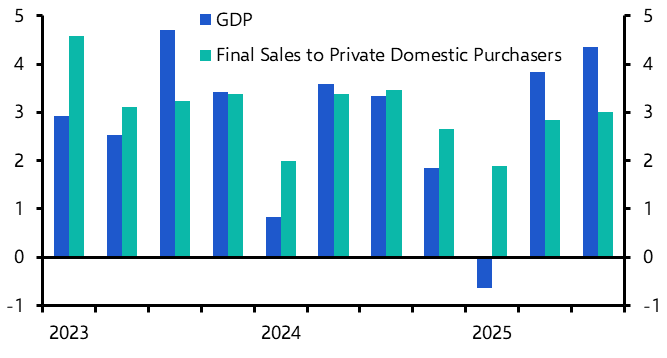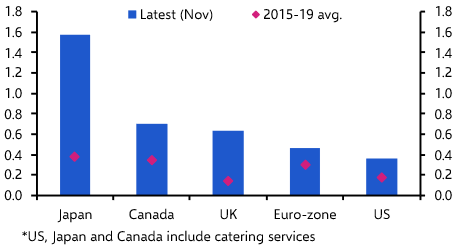All attention this week will be on a swathe of major central bank decisions, with the Federal Reserve’s first rate announcement of the year due on Wednesday, followed by the Bank of England and the European Central Bank on Thursday.
As the week’s policy statements are likely to underscore, the number one priority of central banks remains to get the inflation genie back in the bottle. But beyond price stability, should they be doing more to tackle the issues of the day? If central banks have roles to play in solving challenges like debt sustainability and climate change, shouldn’t they be mandated to do so?
This isn’t just theorising. Central bank independence, a cornerstone of monetary policy for the past thirty years, has come under fire on several fronts. Most obviously, successive rounds of quantitative easing in the wake of the global financial crisis and then the pandemic have blurred the lines between fiscal and monetary policy – and therefore governments and central banks.
More generally, however, most central banks – though notably not the Fed – do have secondary mandates to support the policies of the government of the day. And this is where pressure is being applied for them to do more. Not that they’re all resistant to doing so.
Tackling climate change is by far the biggest challenge facing policymakers in coming decades and, at a recent Riksbank gathering, a spectrum of central bank opinion was voiced about what they should be doing to assist.
At one end was Jay Powell’s well-publicised message that the US Fed is not, “and will not be, a climate policymaker”; but Isabel Schnabel was at the other end, talking about how the ECB is aligning policy with Paris Agreement objectives, including steps to actively decarbonise its balance sheet.
Playing to their strengths
But as David Oxley, the Head of Climate Economics coverage, points out, despite some disagreement in public, there is a growing consensus behind the scenes about the role that central banks should play in the green transition. This boils down to a view that central banks must manage the risks stemming from climate change, particularly for the financial sector and banks – but that governments should be leading the charge on tackling climate change. This is for three reasons.
The first is simply that fiscal policy – rather than monetary policy – is the best tool for the job. Meeting targets for net zero will require changing what we consume and how we produce, and that in turn will require changing incentives for households and businesses. This should be done through the tax system rather than the monetary system. Likewise, building the infrastructure needed to enable and support the transition to net zero is a job for governments rather than central banks.
The second reason for leaving climate policies to governments is that they are accountable to the public. Achieving goals for net zero will require accepting trade-offs: we will have to bear costs in order to reap the benefits of a greener economy. Technological progress means that aggregate GDP may not be lower than in a “no change” scenario (and, indeed, in the very long-run is likely to be higher). But the transition will inevitably create winners and losers. And in democracies, it is important that those making major decisions of this kind have a mandate to do so and are accountable to the public.
The third reason that governments should take the lead on climate is that the past year’s surge in inflation has served as a reminder of what can happen if central banks take their eye off the ball with respect to their primary objective of maintaining price stability.
The task at hand
With that in mind, we expect this week to mark a new chapter in what has been a belated – but finally aggressive – central bank fight to bring down inflation.
In the US, we expect the Fed to shift to a smaller 25bps increase in the fed funds rate and, with the economic activity data deteriorating and inflation set to fall sharply, we think its now close to the end of the tightening cycle.
But the ECB and the Bank of England have more work to do, and we anticipate another 50bps increase in interest rates by both central banks this week. What’s more, the flip side of the recent improvement in the activity data in the euro-zone is that demand conditions will be stronger than previously expected – requiring the ECB to raise rates even further in order to contain price pressures. We now expect policy rates to peak at 3.5% (rather than the 3% that we had previously anticipated).
Looking further ahead, even if inflation does fall back and settle at rates of 2-3% over the long run, as we expect, central banks face enormously complex and uncertain inflation outlooks in a post-pandemic, fracturing global economy. Viewed through this lens, demands to expand the mandates of central banks look like a relic of the Goldilocks era. Efforts to meet net zero targets – or other goals in areas such as reducing inequality – will require governments to take increasingly difficult, and in some cases painful, decisions on how economies are structured. It will be easier for them to make these calls in an environment of broad macro stability. The most helpful contribution central banks can make is to focus on their core objectives of maintaining price stability and financial stability. They have more work to do on this front – starting this week.
In case you missed it:
- Senior Markets Economist Thomas Mathews looked at what waning appetite for US Treasuries says about the outlook for yields;
- Our preview of Friday’s US employment data explains why we think more signs of labour market weakness are likely;
- Senior Economic Adviser Vicky Redwood explains why the fact that central banks are now incurring losses on bonds bought via QE aren’t a major concern.




